2023 Rockshox Fork & Shock Lineup Overview
Fork Highlights:
- All-new Pike and Lyrik chassis
- Revised ZEB
- New Charger 3 damper
- New DebonAir+ air spring
Shock Highlights:
- Updated Deluxe and Super Deluxe
- New RC2 and RC2T Super Deluxe dampers with adjustable high- and low-speed compression
- Super Deluxe Air and Coil now feature optional hydraulic bottom-out
- All-new Deluxe Coil shock
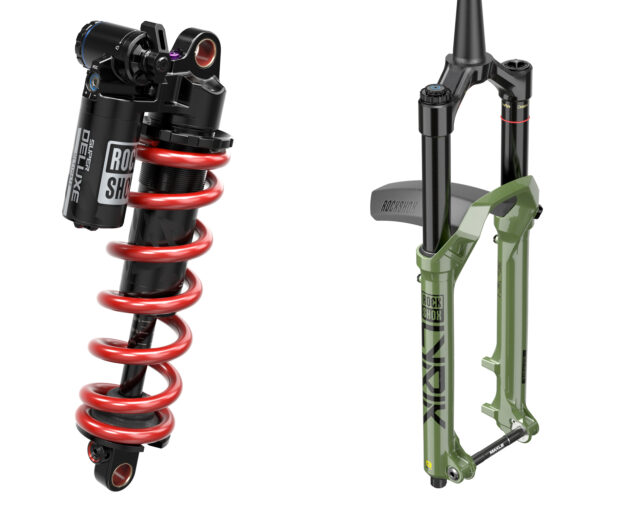
Intro
RockShox unveiled a massive overhaul of their suspension lineup today, including all-new versions of their Pike, Lyrik, and ZEB forks, and Deluxe and Super Deluxe rear shocks. There’s a lot to cover here, so let’s dive straight in.
Forks
The 2023 updates cover the Pike, Lyrik, and ZEB forks, all of which are meant for Trail and Enduro use — the XC-oriented SID and SID SL, as well as the Boxxer DH fork, are unchanged, for now. All three new forks get chassis updates that we’ll describe in more detail in their respective sections below, but the core technology — chiefly, an entirely new damper and air spring — is shared across the range.
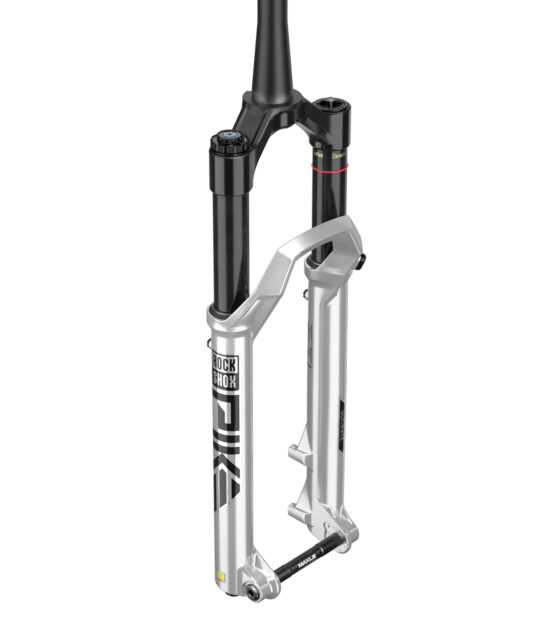
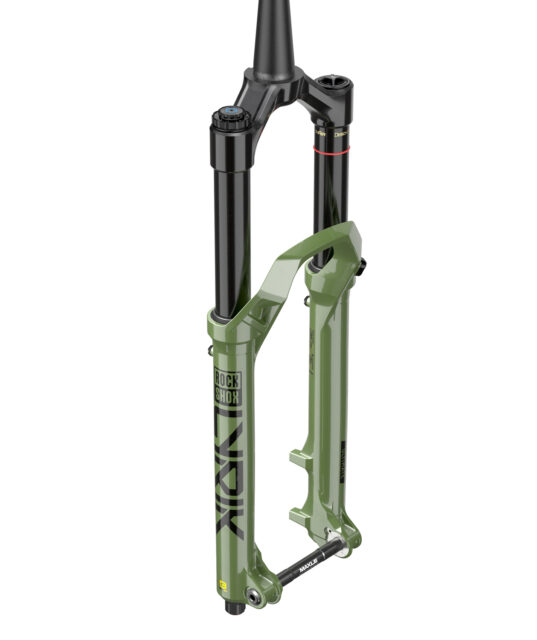
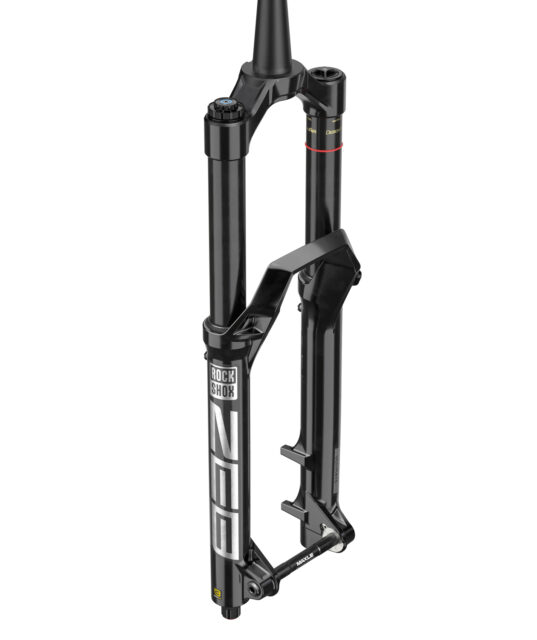
Charger 3 Damper
First up is a brand-new damper, dubbed Charger 3. It’s a full redesign from the outgoing Charger 2.1, including a switch to a coil-spring-backed IFP design (from a bladder on the Charger 2.1). RockShox had two main goals for the new damper: (1) decoupling high- and low-speed compression adjustments, so that one truly doesn’t impact the other and (2) reducing the amount of harshness / high-speed spiking that occurs on sharp and repeated impacts.
In most dampers, the high- and low-speed compression adjustments act predominantly in their nominal range (though exactly what counts as “high” and “low” speed is fairly subjective), but aren’t fully independent, either — for example, changing the low-speed adjuster still has some effect on high-speed damping, too. In short, varying the amount of oil that can flow through the low-speed circuit changes the threshold at which the high-speed one has to take over and start taking on some of the oil flow, which in turn means that the amount of oil flowing through the high-speed circuit, and therefore the amount of damping force that it generates, isn’t constant at a given shaft speed, depending on how the low-speed adjuster is set.
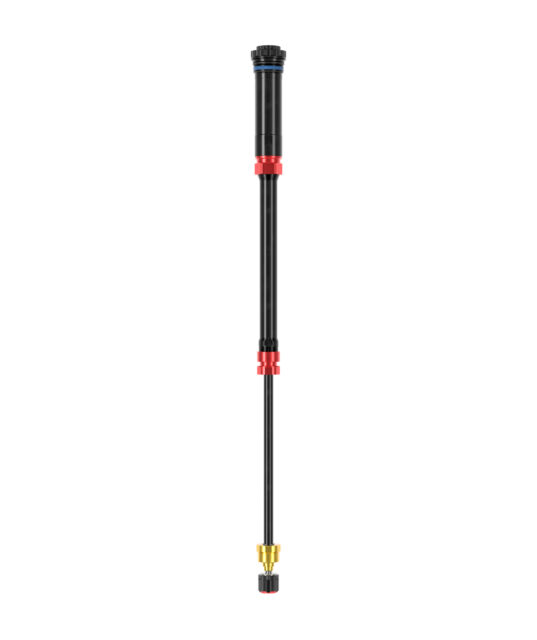


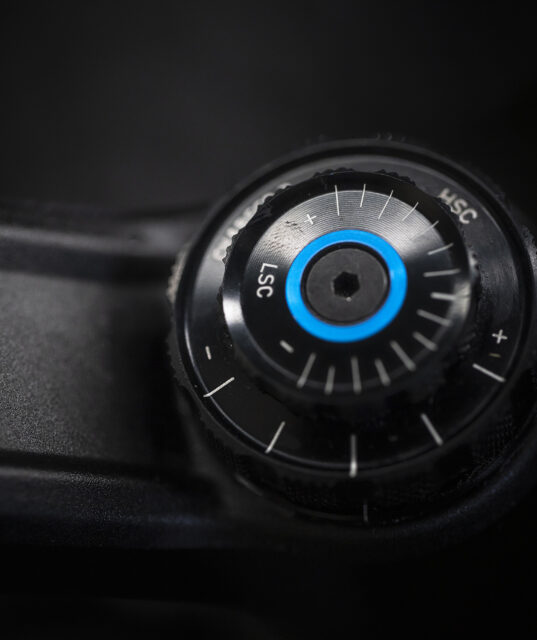
RockShox calls that phenomenon “cross talk,” and says that they’ve reduced it to the point where the amount of damping at 300 inches per second of shaft speed (squarely in the high-speed range) only varies by 5% across the entire range of the low-speed compression adjuster.
And along with that, they’ve done something pretty interesting with the adjusters: rather than indexing them from fully closed and counting clicks from there, RockShox has set the middle of the range as the default, index position — and says that those middle “0” positions are consistent from one fork to the next. The idea was to simplify tuning, by having a consistent and repeatable baseline that’s actually a middle-of-the-road, viable setting for a lot of riders (instead of fully closed compression damping, which few folks would actually run in practice). The compression adjusters are labeled with that zero position clearly defined at the center of the range, with tick marks to either side of it to give a quick and easy visual confirmation of where they’re set, without needing to sweep through the adjustment range and count clicks from fully closed.
A secondary goal was to make the damper quiet — “slurping” noises on rebound are pretty common in a lot of forks and shocks, and RockShox made a point of eliminating those to keep the bike quiet and avoid distractions to the rider.
The new Charger 3 damper is available in the Ultimate and Select+ versions of the Pike, Lyrik, and ZEB (more on those below), with adjustable high- and low-speed compression, plus rebound.
DebonAir+ Air Spring
The spring side has gotten a major overhaul, too. The new DebonAir+ spring is conceptually similar to DebonAir springs of old — it’s still a conventional single-positive-air-chamber design with a self-equalizing negative spring chamber via a dimple in the stanchion — but many of the finer details have been reworked. The negative chamber volume has been increased, compared to the older DebonAir C1 spring, and the position of the equalization dimple has been tweaked relative to the piston at topout, so that the equalization happens a few millimeters into the fork stroke, for better balanced positive and negative spring forces at topout. RockShox says that the new spring both increases small-bump sensitivity and provides better midstroke support than the prior iteration. The topout bumper has also been revised, to provide a smoother, gentler stop.

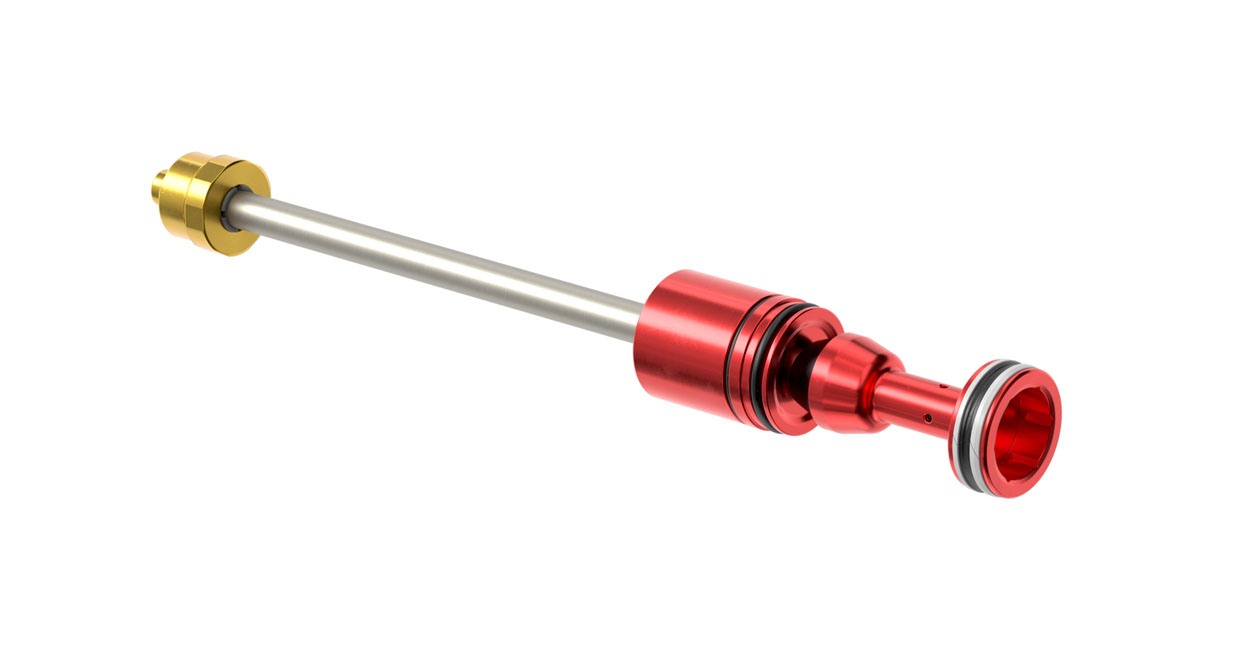
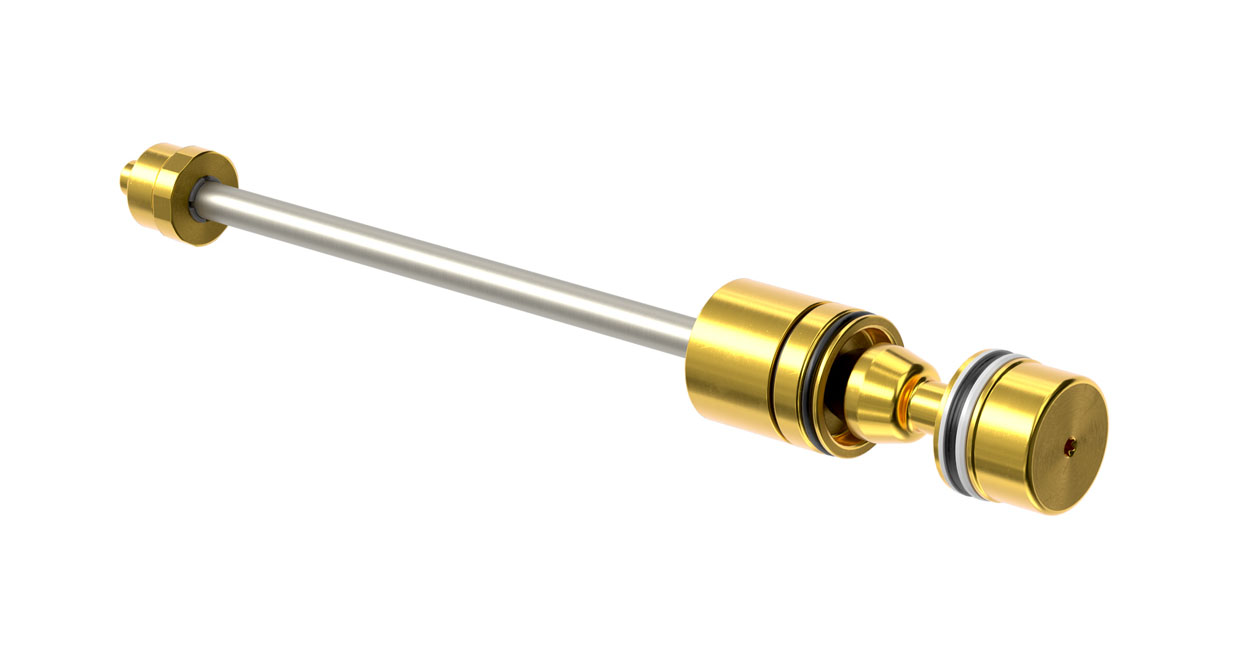
The new DebonAir+ spring is found throughout the 2023 Pike, Lyrik, and ZEB lineup. It actually debuted last fall, in RockShox’s Flight Attendant-equipped forks, but wasn’t widely touted at the time. The DebonAir+ spring can be retrofitted to earlier models of the ZEB but isn’t compatible with prior versions of the Pike or Lyrik. And the versions for each fork have significantly tweaked positive and negative air chamber volumes to work best with each respective chassis and travel range.
Buttercups
RockShox’s “Buttercups” also made their debut with Flight Attendant, and now they’re available on the conventional versions of the forks, too. In short, Buttercups are little rubber isolators that sit at the bottom of the spring and damper shafts to help damp out high-speed chatter. The Buttercups can compress by up to 4 mm, and RockShox says that their data acquisition in testing shows that they reduce chatter by 20%, which should help with hand and wrist fatigue on longer, rougher descents. Buttercups come standard on the Ultimate versions of the Pike, Lyrik, and ZEB, and can be added to lower trims, but only as part of a full DebonAir+ and/or Charger 3 upgrade kit. RockShox says that running them in just one leg is possible, in the case of a partial upgrade, and would provide roughly half the benefit of running two.
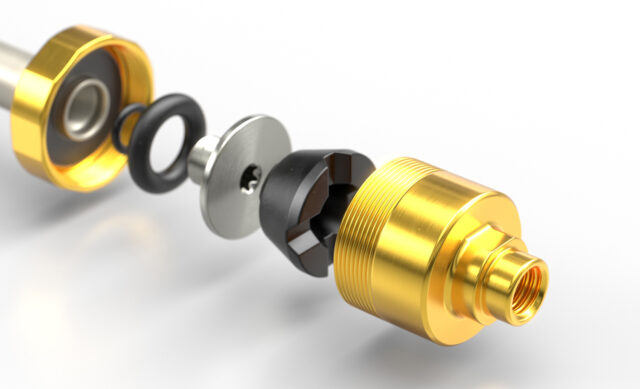
Ultimate Bushing Package
The Ultimate-series forks also get a new bushing package, with a 53% longer lower bushing, which RockShox says increases overlap and reduces friction by distributing the load over a greater area and helping to mitigate binding when the fork is being heavily loaded. Other fork trims get the standard bushing package, and upgrading to the Ultimate bushings requires an entire UItimate lower leg casting with the bushings pre-installed.
Other Details
RockShox has also added pressure-relief valves, similar to what Fox has offered for a while now, onto all three of the new forks. The valves come standard on Ultimate and Select+ series forks, but can be retrofitted to the other models with the new 2023 chassis versions. The new lowers also get optional bolt-on adapters at the dropouts, which take up the extra space that Torque Cap axle flanges would, to make axle alignment easier if you’re using a wheel without Torque Caps. And to cap it all off, RockShox has also developed a new lower leg lubrication oil in conjunction with Maxima, which they say lasts longer and is more consistent at a wider range of temperatures than their previous lower leg oil.
The base / least-expensive versions of all three forks get a new damper that RockShox calls the Rush RC, with adjustable rebound and compression. We don’t have much info on the Rush RC yet, but have reached out to RockShox and will update this post when we learn more.
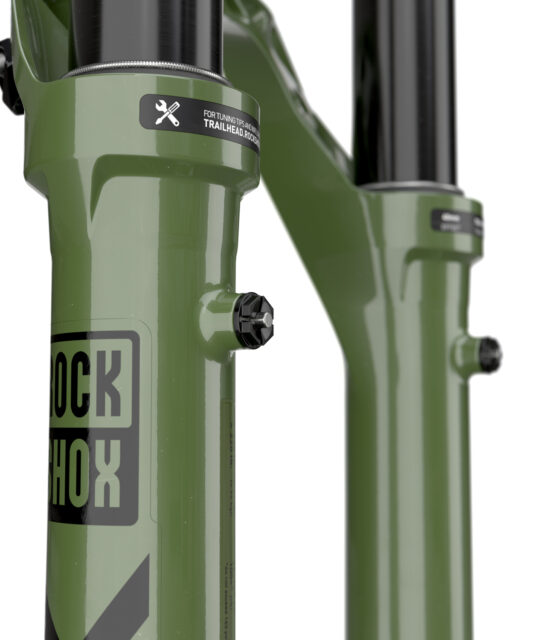
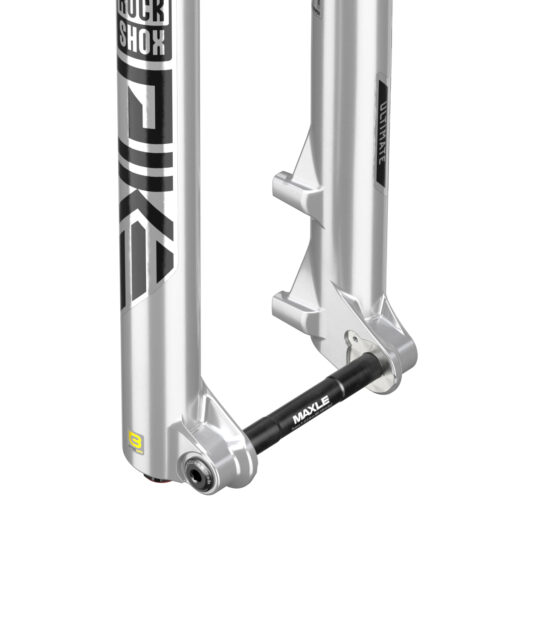
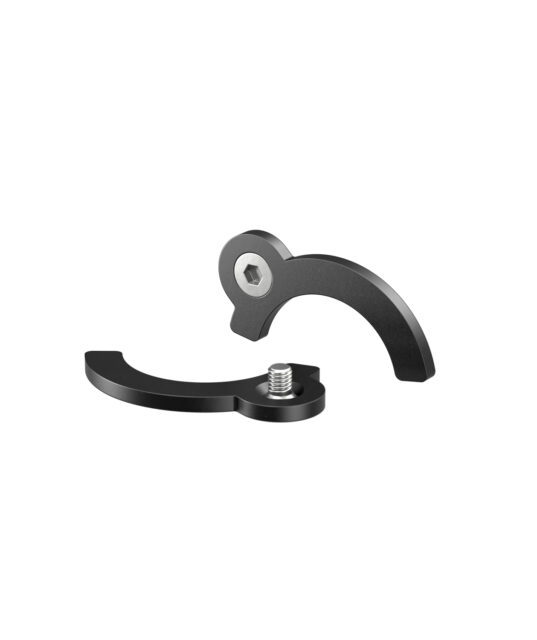
Pike
The Pike Trail bike fork gets an all-new chassis, and while the 35 mm stanchions remain, RockShox says that the new version is both slightly stiffer and a few grams lighter than the outgoing version. In addition to all the new features that we talked about up top, the new Pike also gets a new bolt-on fender (similar to the one that’s been available on the ZEB for a few years now). The Pike is available for both 27.5’’ and 29’’ wheels and with 120, 130, or 140 mm travel.
Specs:
- Stated weight: 1,887 g
- Travel options: 120, 130, and 140 mm
- Wheel sizes: 27.5’’ and 29’’
- Offsets: 37 mm (27.5’’), 44 mm (27.5’’ and 29’’)
- MSRP: $1,054 / €1,139 / £1,017 (European prices include VAT)
- Damper: Charger 3 RC2 w/ Buttercups
- Spring: DebonAir+ w/ Buttercups
- Other features: Ultimate Bushing Package, Pressure-Relief Valves
- MSRP: OE only
- Damper: Charger 3 RC2
- Spring: DebonAir+
- Other features: Pressure-Relief Valves
- MSRP: $790 / €588 / £763 (European prices include VAT)
- Damper: Charger RC
- Spring: DebonAir+
- MSRP: OE Only
- Damper: Rush RC
- Spring: DebonAir+
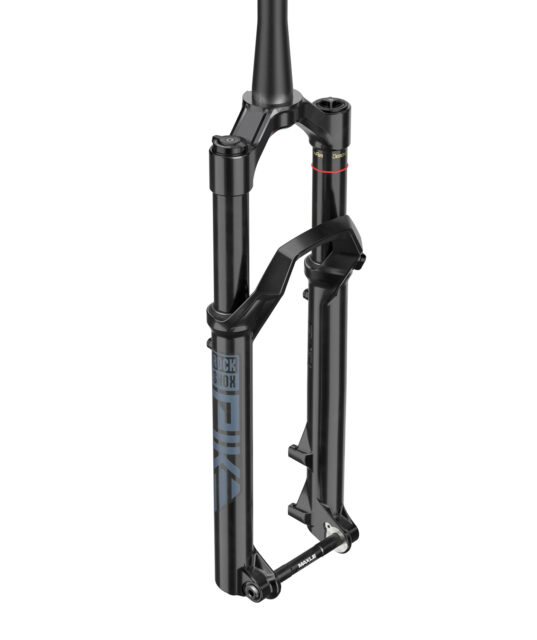

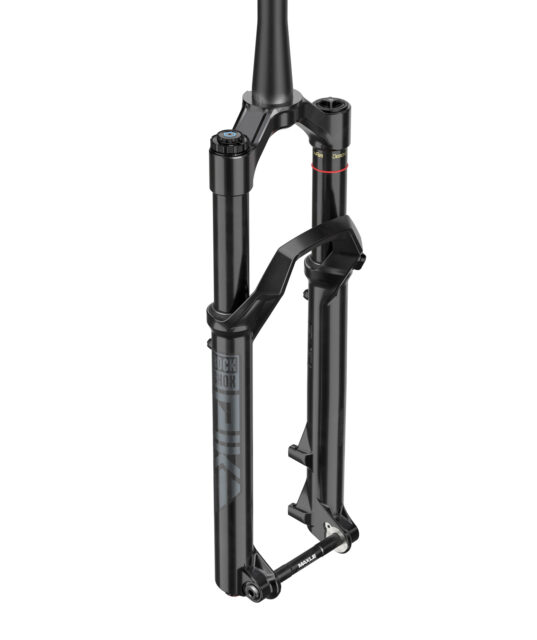


Lyrik
Like the Pike, the Lyrik gets a new 35mm-stanchioned chassis, which is claimed to cut a tiny bit of weight and add a little bit of stiffness over the outgoing model. It also gets the same new bolt-on fender as the Pike, and the classic red color option on the Lyrik Ultimate has been replaced with a new olive green color that RockShox calls “Heavy Meadow.” The Lyrik is available for both 27.5’’ and 29’’ wheels and with 140, 150, or 160 mm of travel.
Specs:
- Stated weight: 2,028 g
- Travel options: 140, 150, and 160 mm
- Wheel sizes: 27.5’’ and 29’’
- Offsets: 37 mm (27.5’’), 44 mm (27.5’’ and 29’’)
- MSRP: $1,107 / €1,196 / £1,069 (European prices include VAT)
- Damper: Charger 3 RC2 w/ Buttercups
- Spring: DebonAir+ w/ Buttercups
- Other features: Ultimate Bushing Package, Pressure-Relief Valves
- MSRP: OE only
- Damper: Charger 3 RC2
- Spring: DebonAir+
- Other features: Pressure-Relief Valves
- MSRP: $843 / €912 / £813 (European prices include VAT)
- Damper: Charger RC
- Spring: DebonAir+
- MSRP: OE Only
- Damper: Rush RC
- Spring: DebonAir+



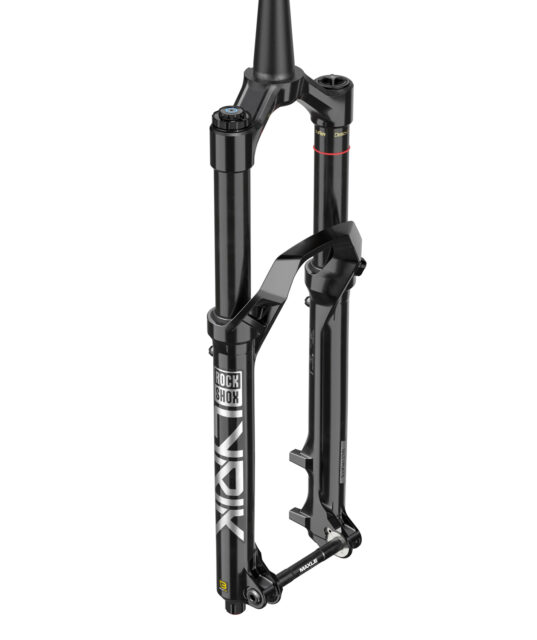

ZEB
The 38mm-stanchioned ZEB chassis gets a more minor overhaul than the Pike and Lyrik, but it still adds the same bells and whistles, including the pressure-relief valves, hub end-cap adapters, and the Ultimate Bushing Package (ZEB Ultimate only). The more modest update means that the new Charger 3 damper and DebonAir+ spring can be retrofitted to earlier model-year ZEBs, unlike the Pike and Lyrik. The Zeb is still available for both 27.5’’ and 29’’ wheels and with 160, 170, 180, or 190 mm of travel.
Specs:
- Stated weight: 2,341 g
- Travel options: 160, 170, 180, and 190 mm
- Wheel sizes: 27.5’’ and 29’’
- Offsets: 38 mm (27.5’’), 44 mm (27.5’’ and 29’’)
- MSRP: $1,159 / €1,253 / £1,119 (European prices include VAT)
- Damper: Charger 3 RC2 w/ Buttercups
- Spring: DebonAir+ w/ Buttercups
- Other features: Ultimate Bushing Package, Pressure-Relief Valves
- MSRP: OE only
- Damper: Charger 3 RC2
- Spring: DebonAir+
- Other features: Pressure-Relief Valves
- MSRP: $869 / €968 / £864 (European prices include VAT)
- Damper: Charger RC
- Spring: DebonAir+
- MSRP: OE Only
- Damper: Rush RC
- Spring: DebonAir+
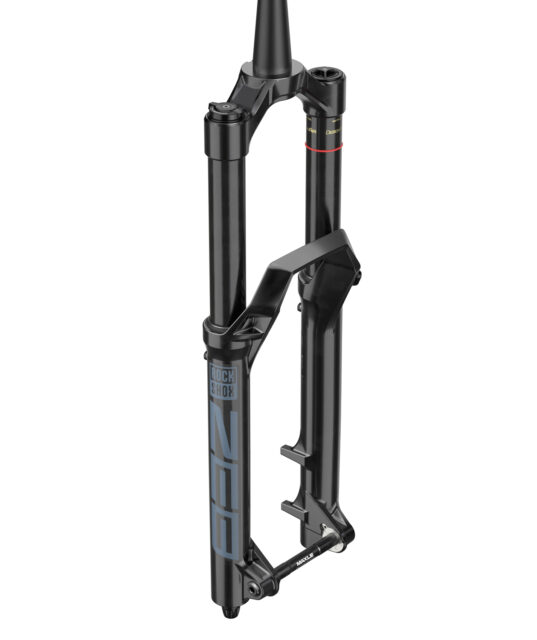
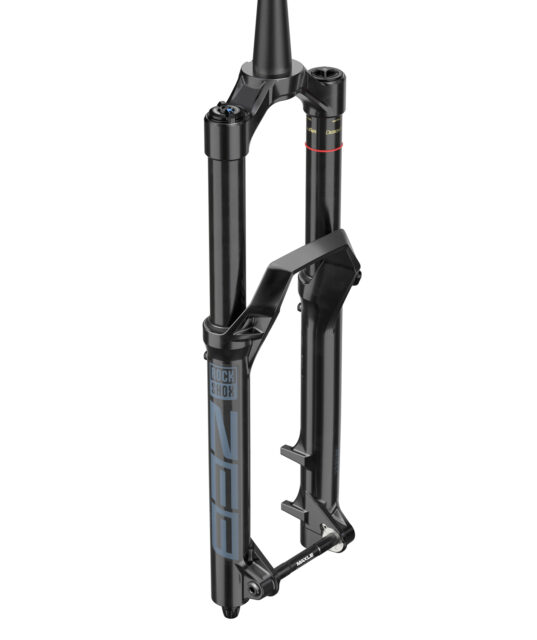



Shocks
RockShox has also overhauled their rear shock lineup to go with the new forks, with new versions of the Deluxe and Super Deluxe, in both air and coil configurations. The updates largely mirror those added to the fork line — revised dampers and air springs as well as chassis updates — plus some new features and additional adjustability.
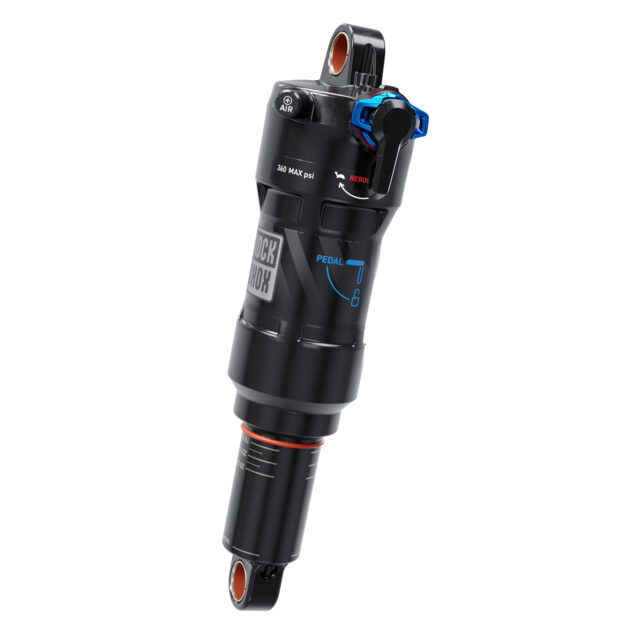
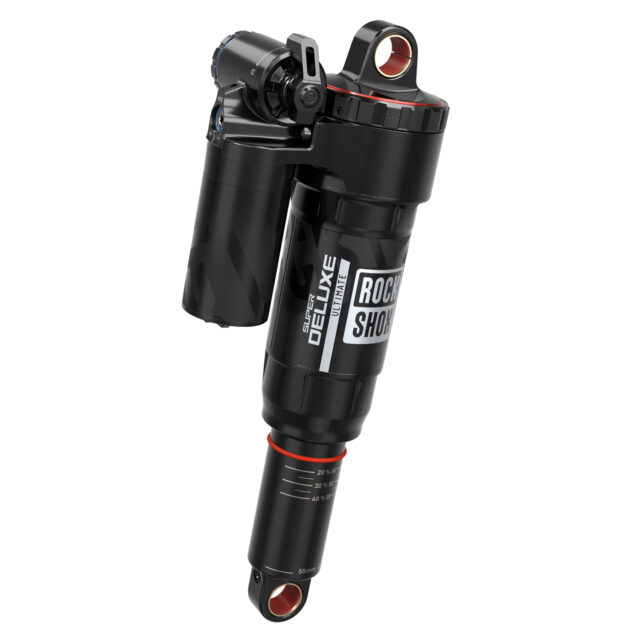

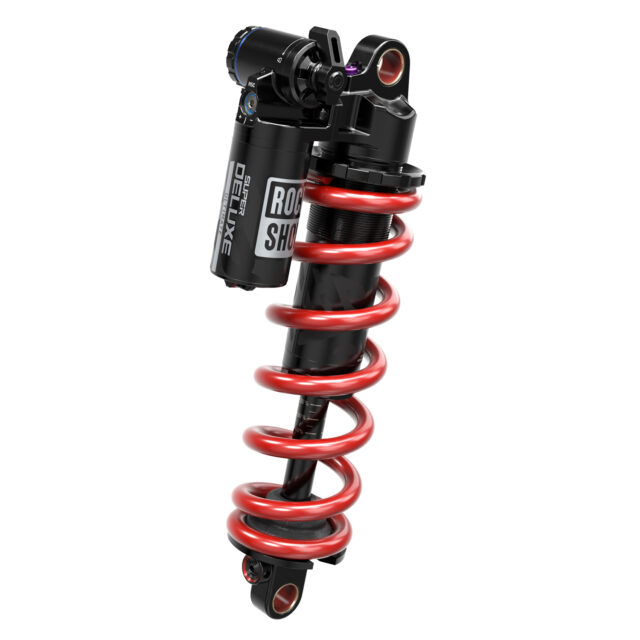
Deluxe
The Deluxe is RockShox’s lineup of straight body shocks meant for shorter-travel Trail bike duty, where weight is at more of a premium, and its feature set is paired down to match. But the new Deluxe line gets a revised chassis with extra bushing overlap for improved stiffness and less binding. The Deluxe air shocks also get a new spring, also called DebonAir+, which features options for two different air cans (one more progressive, the other more linear), plus options for volume spacers in both the positive and negative chambers to fine-tune the spring curve. The volume spacers for the new shocks are purple, and the older versions aren’t compatible with the new 2023 shocks. And there’s an all-new Deluxe Coil, meant for e-bikes and other models that might want to run a coil shock but have packaging constraints that rule out the Super Deluxe with its remote reservoir.
- MSRP: $399 / €431 / £385 (European prices include VAT)
- Spring: DebonAir+, Linear or Progressive air can options
- Damper: RCT
- Adjustments: Rebound, low-speed compression, threshold (climb switch)
- MSRP: OE only
- Spring: DebonAir+, Linear or Progressive air can options
- Damper: RT
- Adjustments: Rebound, threshold (climb switch)
- MSRP: OE only
Spring: DebonAir+, - Linear or Progressive air can options
- Damper: R
- Adjustments: Rebound
- MSRP: OE only
- Spring: Coil
- Damper: R
- Adjustments: Rebound
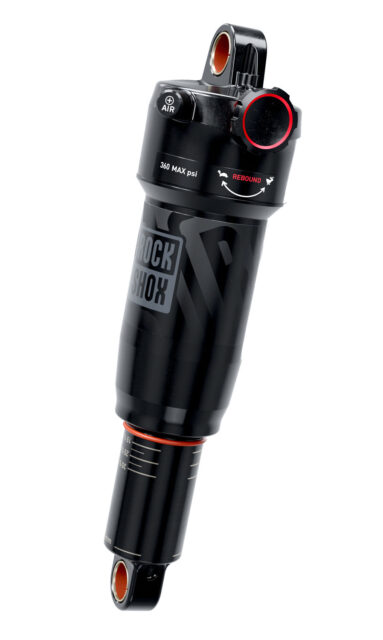
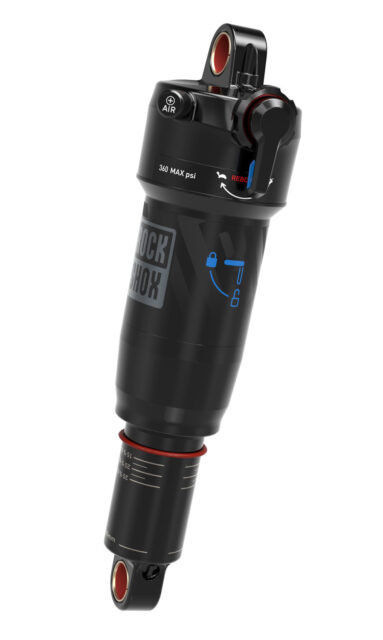

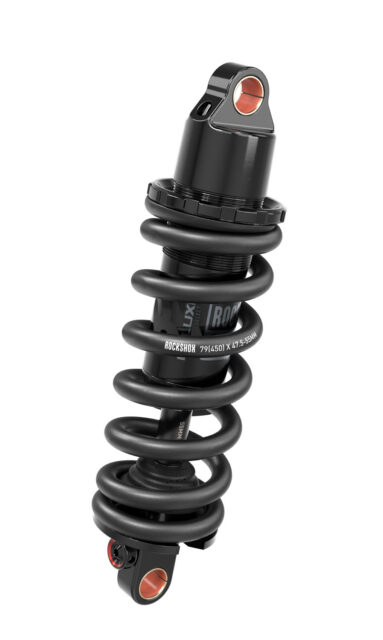
Super Deluxe
The Super Deluxe is RockShox’s line of external-reservoir shocks for longer-travel Trail through DH bikes, and the new versions get a new damper with a lot of the same features as the Charger 3 one in the new fork lineup. The flagship Ultimate versions (both air and coil) get a high-speed compression adjuster that was absent from the prior-generation shocks, and the new RC2 shock damper features the same decoupling of the two compression adjusters as the Charger 3. And like the Charger 3, the compression adjusters are indexed to the middle of the range to simplify tuning (go read the section on the Charger 3, above, if you skipped past that bit earlier).
In another first for the Super Deluxe lineup, all air- and coil-sprung models can be equipped with an optional hydraulic bottom-out feature, which increases compression damping in the last 20% of the shock stroke for increased bottom-out control. Adding or removing the HBO system would require a full damper overhaul and swapping a number of parts, so it’s not going to be an easy DIY, or probably all that cost-effective — rather, some OE-spec shocks may skip the option if the frame manufacturer decides that it’s not suitable for the frame in question but it’s essentially baked into the shock (or not) from the factory. In the case of the Super Deluxe Air, the amount of extra damping offered by the HBO system is fixed from the factory, but the coil versions get an external adjuster to fine-tune things further.
The Super Deluxe Air also gets a new bottom-out bumper that’s supposed to be smoother and offer a more cushioned travel stop, along with the new DebonAir+ air spring and both air can options, just like the Deluxe. Both the Air and Coil versions get some chassis tweaks to increase bushing overlap and help keep the shock more rigid, especially for frames that introduce significant side loading to the shock. And then the whole lineup gets the same new Maxima Plush Dynamic Suspension Lube as the fork lineup, too.

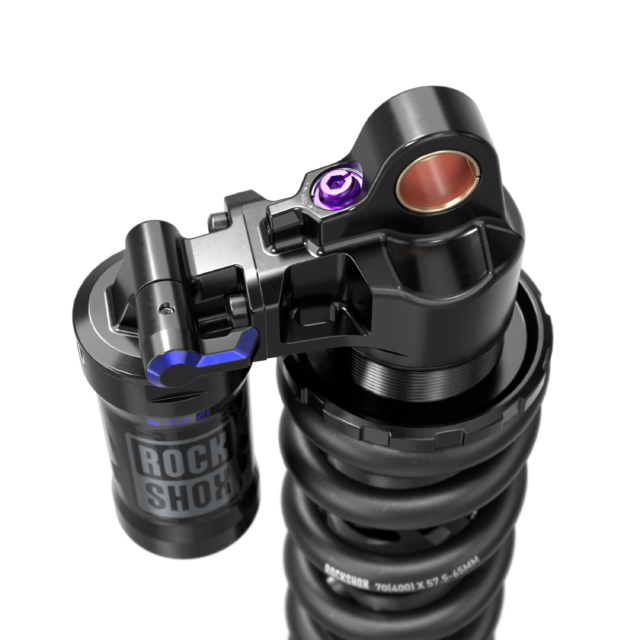
Both the Super Deluxe Ultimate Air and Coil are available in versions with a climb switch (RC2T damper), or in a DH version (in sizes meant for longer-travel bikes) that forges the option (RC2 damper). A more complete rundown of the lineup is below.
- MSRP: $599 / €648 / £578 (European prices include VAT)
- Spring: DebonAir+, Linear or Progressive air can options
- Damper: RC2T w/ optional hydraulic bottom-out
- Adjustments: Rebound, high-speed compression, low-speed compression, threshold (climb switch)
- MSRP: OE only
- Spring: DebonAir+, Linear or Progressive air can options
- Damper: RC2 w/ optional hydraulic bottom-out
- Adjustments: Rebound, high-speed compression, low-speed compression
- MSRP: OE only
- Spring: DebonAir+, Linear or Progressive air can options
- Damper: RT w/ optional hydraulic bottom-out
- Adjustments: Rebound, threshold (climb switch)
- MSRP: OE only
- Spring: DebonAir+, Linear or Progressive air can options
- Damper: R w/ optional hydraulic bottom-out
- Adjustments: Rebound
- MSRP: $549 / €594 / £530 (European prices include VAT)
- Spring: Coil
- Damper: RC2T w/ optional hydraulic bottom-out
- Adjustments: Rebound, high-speed compression, low-speed compression, threshold (climb switch)
- MSRP: $499 / €539 / £482 (European prices include VAT)
- Spring: Coil
- Damper: RC2 w/ optional hydraulic bottom-out
- Adjustments: Rebound, high-speed compression, low-speed compression
- MSRP: OE only
- Spring: Coil
- Damper: RT w/ optional hydraulic bottom-out
- Adjustments: Rebound, threshold (climb switch)
- MSRP: OE only
- Spring: Coil
- Damper: R w/ optional hydraulic bottom-out
- Adjustments: Rebound
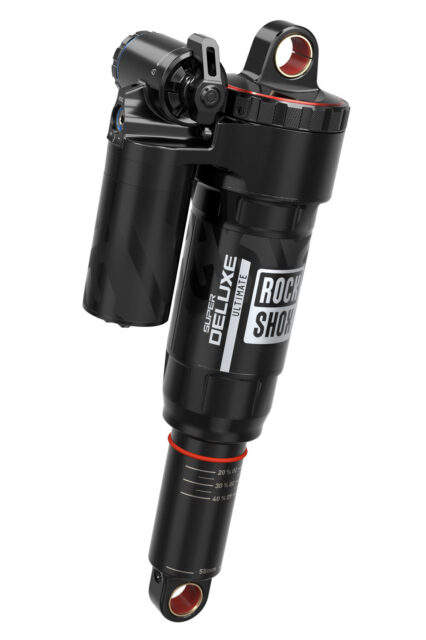


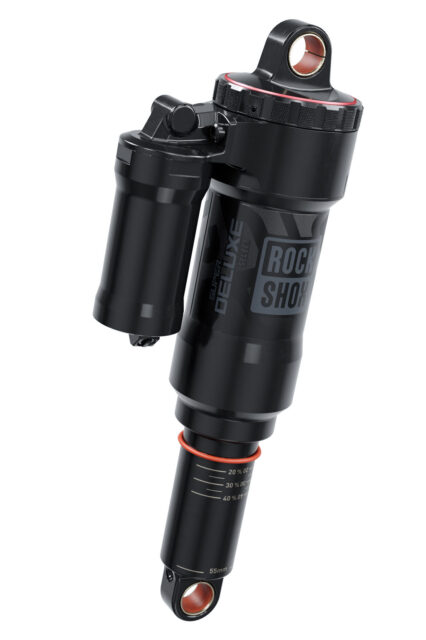

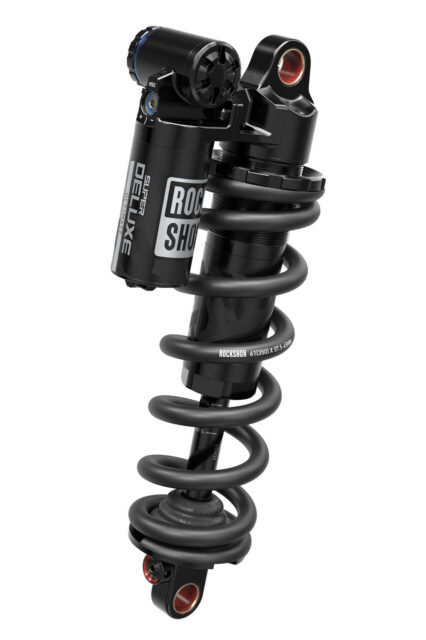
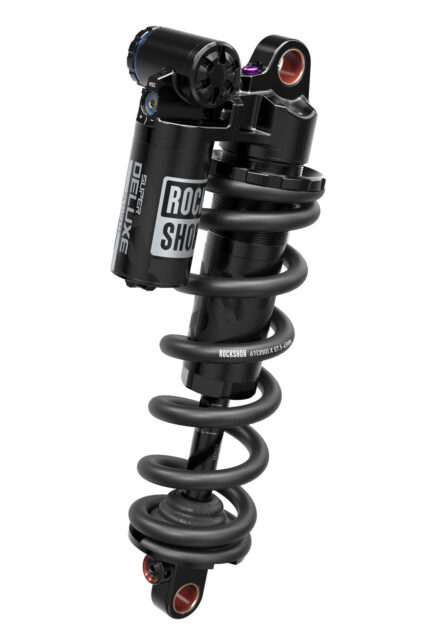
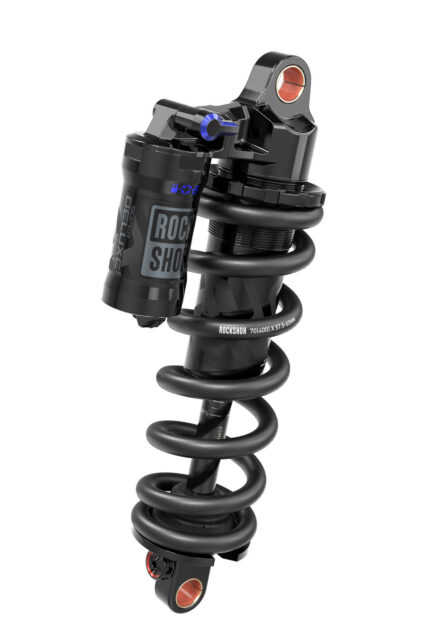
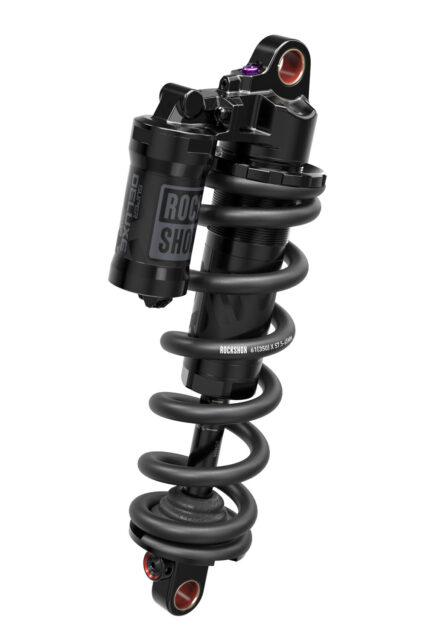
Some Questions / Things We’re Curious About
(1) How does the new Charger 3 damper stack up against the Charger 2.1 that it replaces, and the rest of the high-end market?
(2) The outgoing DebonAir C1 air spring didn’t have the best midstroke support, especially in the ZEB. The new DebonAir+ is supposedly an improvement on that front, but is it?
(3) The prior-generation Super Deluxe shocks worked very well but weren’t the most fully featured. How do the new ones stack up, and will the new features and additional adjustability position them as a true premium product?
Flash Review
Blister Members can read our Flash Review of the new ZEB and Super Deluxe Air for our initial on-trail impressions. Become a Blister Member now to check out this and all of our Flash Reviews, plus get exclusive deals and discounts on gear, and personalized gear recommendations from us.
Bottom Line (For Now)
RockShox has given the core of their suspension lineup a major overhaul, and a lot of the updates seem awfully promising on paper. We’ve started spending time on some of the lineup, and will be logging a lot more miles on more of the different versions soon, so stay tuned for full reviews to come.

Nice. Is there no super deluxe with bearing bushings?
Hey Markus, the bearing eyelet option is still available.
Hey David, thanks for the response. Even after 2 months i still cant find the 2023 shocks with bearing eyelets. Is there a release date when they will be available?
Hmm, they certainly exist — I’ve got one on the Santa Cruz Hightower that’s in for review — but aftermarket availability may be a different story. I’ll see what I can find out.
Have you had a chance to compare the new Super Deluxe vs the Fox Float X? Seems like these two shocks directly compete.